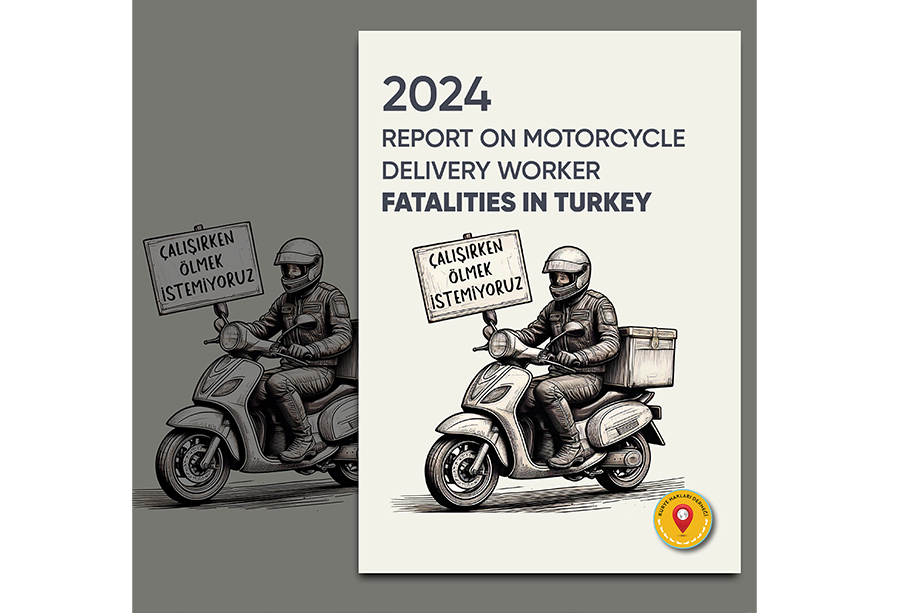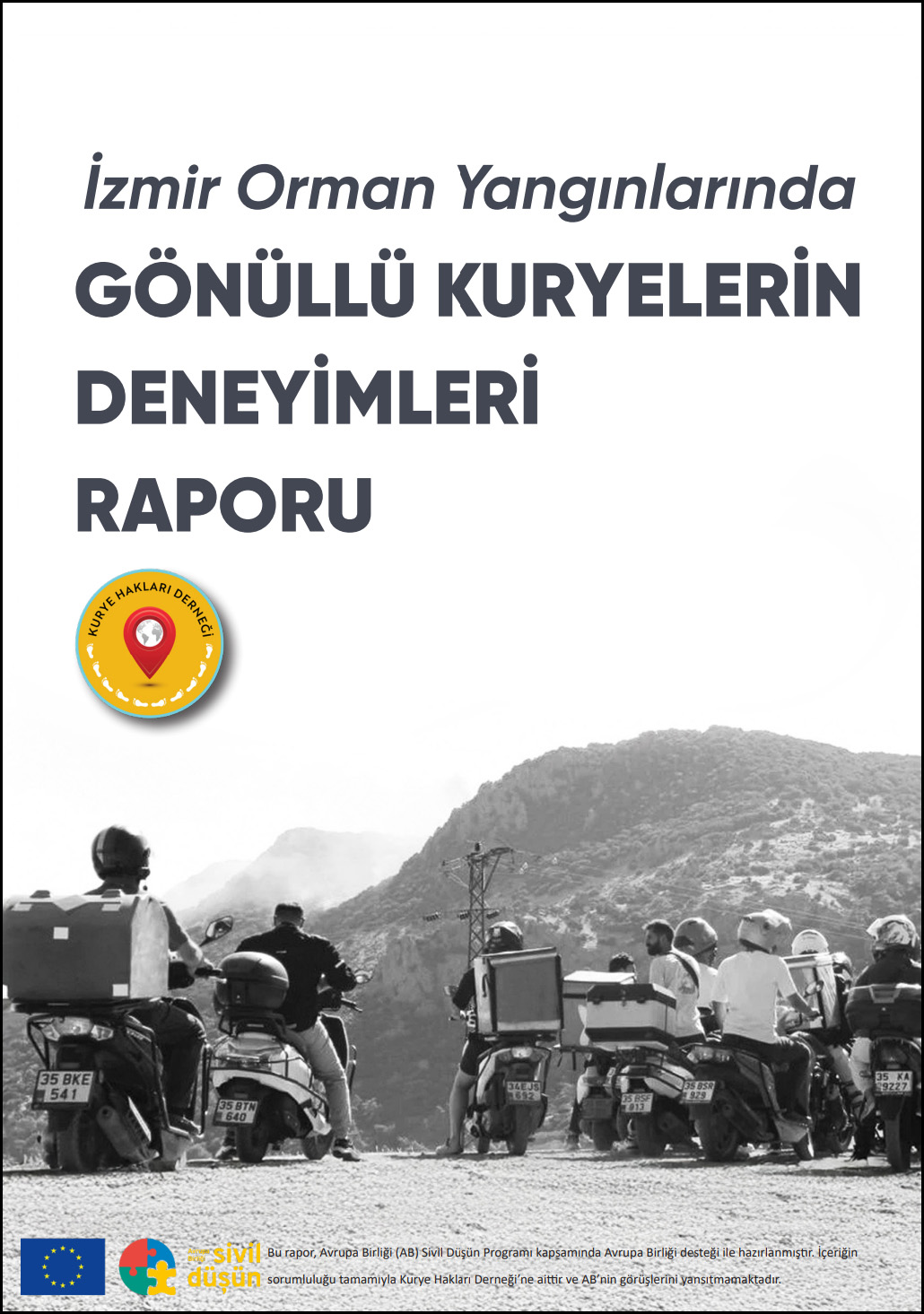
As the Delivery Worker Rights Association, we identified that at least 63 delivery workers lost their lives while working in 2024. We emphasize the phrase “at least” in our reports because there are no official statistics in Turkey that document courier fatalities. By regularly monitoring data from sources such as Courier News, the Health and Safety Labour Watch, unions, confederations, and associations conducting research on delivery workers, as well as national and digital media, we gather information. Additionally, we consult lawyers and track relevant social media and digital communication groups. Thus, we document these fatalities with our limited resources.
The continued high number of delivery worker fatalities this year indicates that significant problems in workplace safety and health persist in the industry. To draw attention to these issues, examine the factors leading to worker deaths, advocate for necessary precautions and regulations, and fundamentally defend the value of human life, we are publishing our report again this year.
The section Overview of Motorcycle Delivery Worker Fatalities shares details about the 63 couriers who lost their lives—when and where they worked, their ages, and the companies they were employed by. It highlights ongoing exploitative conditions in the industry, such as pay-per-delivery systems, speed-based incentives, low wages, long working hours, inadequate and poor-quality equipment, harsh weather conditions, and insufficient oversight mechanisms. This year, we draw particular attention to the deaths of six child couriers, underscoring the state’s obligations to uphold children’s rights. Additionally, the report identifies six fatalities among delivery workers aged 51-64, challenging the misconception that courier work is solely for young individuals.
Baker Khundakji, the Future of Work Lead at the International Transport Workers’ Federation (ITF), shares data on delivery worker fatalities in various countries in her article, “Rider Deaths is a Global Issue.” She emphasizes that platform delivery workers worldwide face severe occupational safety and health challenges and that delivery work should be recognized as a highly hazardous profession. Khundakji points out that the lack of occupational safety among platform couriers has been one of the main drivers of recent industry regulations. She notes that governments have begun implementing new regulations, while platform companies have started providing protective safety equipment, offer training, or reaching agreements with unions. These measures, she argues, reflect the growing acknowledgment by both governments and platform companies that platform delivery work requires additional safeguards. The article calls on policymakers in Turkey to realistically assess the high risks faced by couriers and to consider safety-focused regulations for the sector.
Although this report focuses on fatalities, it also emphasizes that delivery work takes a toll on many couriers emotionally, mentally, and physically, jeopardizing their health and leading to various occupational diseases. The section “Surviving Death: Courier Narratives on Motorcycle Accidents” details the experiences of delivery workers who suffered accidents while working and endured lengthy recovery periods, lasting days, weeks, or even months. Those who have narrowly escaped death recount how couriers survive almost by chance, how unprotected and vulnerable they are during and after an accident, the lack of support from relevant institutions, and how only a few companies offer merely symbolic assistance. Workers remind government officials and companies of their responsibilities, demanding justice for those who have lost their lives and safety for those who remain.
In his article “The Hidden Legal Status of Platform Delivery Workers”, Dr. Murat Özveri, Editor-in-Chief of the Journal of Labor and Society and an expert in labor and industrial relations, discusses how platform companies, which are in fact employers, use a series of unlawful, fraudulent practices to evade the obligations imposed by labor laws and escape liability for potential workplace accidents. By labeling couriers as “independent entrepreneurs” or “self-employed couriers,” they pressure both the couriers and the state to accept a legal status that does not align with the material reality of their work relationship. Özveri states that these platform delivery workers are, in reality, “dependent employees,” meaning their legal status should be classified as “workers,” and any accidents they experience should be considered workplace accidents. The article emphasizes that it is the employer—namely the platform companies—who bears the obligation to inform couriers of the hazards of their work, the risks these hazards entail, and the ways to protect themselves from such risks. Furthermore, the article highlights that employers are responsible for taking all necessary precautions to ensure couriers are not adversely affected by these risks.
The final article of the report, “Reporting Delivery Worker Deaths and the Debated Legal Regulation”, highlights the importance of the Delivery Worker Rights Association’s efforts to bring the precarious working conditions of couriers to public attention and to make their deaths visible by documenting and reporting data. It also underscores the necessity of involving couriers and courier organizations in the legal regulation process while discussing the shortcomings of the proposed legislation currently on the agenda. The article asserts that occupational health and safety is a fundamental right and that policies should align with international norms. It argues that recording and publicizing courier deaths—essentially workplace homicides—is a means of resisting business models that disregard human life. In this context, it contends that tracking and reporting worker fatalities is a political act.
The Conclusion and Recommendations section highlights the significance of regulatory discussions on the sector this year, even if they remain incomplete. As in previous reports, this section summarizes the duties and responsibilities of various actors in preventing courier deaths, the necessary measures to be taken, and the inspections and regulations that need to be implemented.
Downloader PDF: 2024-Repor-On-Motorcycle-Delivery-Worker-Fatalities-In-Turkey.pdf

